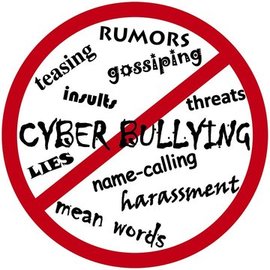Cyberbullying is becoming more and more prevalent in today’s society due to easy access to electronics and social media. As parents, we need to teach our children healthy ways to socialize and interact online.
What is Cyberbullying?
Cyberbullying includes a range of harmful words and actions that take place in the digital world. Some examples:
- sending mean messages to someone
- sharing embarrassing pictures of them
- making up and spreading untrue stories about them
- telling others to ignore someone or leave them out of activities
How is cyberbullying different from bullying?
- When & Where. Face-to-face bullying usually takes place during the day, but cyberbullying can happen anyplace, any day of the week, at any time of day.
- No Signature Needed. Although anonymous bullying is not common, either in person or online, and can happen without knowing who is sending the messages.
- Passing it On. Mean or embarrassing posts on social media can spread quickly online and “go viral.” This can increase the hurt or embarrassment from a bullying experience.
How parents can prevent cyberbullying
- Discuss digital citizenship. Talk with your children about being respectful online and how negative messages can hurt others. Remember, you are a role model. Be sure to set a good example of positive online interactions.
- Check in early & often. Ask your children about what kind of messages they are seeing, sending, and getting and how they feel about them.
- Make a plan. Create a family media use plan to set guidelines and rules that are important to your family.
Visit our Parent Resources for more information about some common issues!
